Last week, Lenovo announced the second generation of its line of Moto Z Force handsets, saying that it aims to relaunch Motorola as a major smartphone brand that will "challenge everyone, including competitors, because we see the industry as stagnant."
Thinner and lighter than its predecessor, the Z2 Force includes Qualcomm's latest flagship SoC, the Snapdragon 835, along with 4GB of RAM and 64GB of internal storage. The 1440p AMOLED display includes Motorola's ShatterShield technology, promising that the screen is nearly unbreakable.
The dual-lens camera is no slouch either, combining phase detect and laser autofocus technologies. The second lens is monochrome, and it's used for a depth effect.
But not everything about the Z2 is perfect. It's a wonderful device, but the depth effect, while trendy, isn't great, and while the screen won't break, it can be scratched very easily.
Of course, you can read on and I'll elaborate on all of that.
Specs
| CPU | Octa-core Snapdragon 835, quad-core 2.35GHz Kryo 280, quad-core 1.9GHz Kryo 280 |
|---|---|
| GPU | Adreno 540 |
| Display | 5.5 inches, 1440p, 534ppi, Super AMOLED |
| Body | 155.8x76x6.1mm, 143g |
| Camera | Dual 12MP, Front - 5MP |
| Video | 4K - 30fps, 1080p - 60fps (120fps for slow motion), Front 1080p - 30fps |
| Aperture | f/2, Front - f/2.2 |
| Sensor size | 1/2.9 inches |
| Camera features | Phase detect and laser autofocus, dual-tone LED flash, front-facing dual-tone LED flash |
| Storage | 64GB |
| RAM | 4GB |
| Battery | 2,730mAh |
Design
I'll be honest; part of me loves the design of the Moto Z2 Force, and the other part of me hates it. On one hand, it's thin, light, and for the most part, comfortable to hold. On the other hand, it almost feels like half a phone.
On the bottom part of the rear panel, there are connectors for Motorola's modular accessories, called Mods. The phone sort of feels like it's meant to have a Mod on the back of it, like there's something missing when there isn't one attached. This causes feelings of confusion when you like a thin and light phone.

I do wonder if the pins on the back will get dirty over time and how well they'll connect to Mods after that, but as it stands now, they work fine.
The handset only has a single port, which is USB Type-C (located on the bottom of the device), which means no 3.5mm headphone jack, just like its predecessor. The big disappointment here is that it doesn't come with headphones, so you'll have to go out and get your own USB Type-C earbuds.
According to Motorola's own product listing, it should come with a 3.5mm to USB Type-C adapter. Mine did not; however, the company has confirmed to me that this was an oversight, and all carrier variants of the device do come with it.

On the upper-right side of the phone, you'll find the volume rocker, and slightly below that, the power button. The three buttons look nearly identical, but while I thought it might get confusing when I unboxed it, it was easy to get used to, especially since most of the time you'll wake the device with the fingerprint reader.

As you can see, it also has quite the camera bump on the back. This is part of the reason that it feels like half of a phone, because that bump goes away when you're using a Mod. But again, I don't want to use a Mod all of the time.
And one more thing; this thing isn't just a fingerprint magnet. It's nearly impossible to keep clean, and it was hard enough to try to take decent pictures of it.
ShatterShield display
The 5.5-inch 1440p Super AMOLED display is frankly beautiful. The colors are vibrant, and the blacks are true. In other words, it's exactly what you'd expect from a high-resolution AMOLED screen.

And it's not going to break. Motorola demonstrated this at the event by dropping it onto a brick floor, and even by dropping an iPhone at the same time.
But here's the thing. OEMs can build shatterproof displays, or they can build them scratch-proof, but no one has yet been able to do both. It turns out that harder materials break easily, and while softer materials won't shatter, they're much more likely to scratch.
The screen on the Moto Z2 Force is very easy to scratch; in fact, you can scratch the display with your fingernail with minimal effort, and that's not an exaggeration. If you buy this phone, it's probably worth picking up a screen protector.
The good news is that Lenovo was smart enough to not include this technology on the cover to the camera lens, so you don't have to worry about accidentally scratching that.

One more feature of the display is called Moto Display, and that means that you'll see a screen similar to the one above while the phone is asleep, which will also show you notifications that you can open directly. In fact, in the Moto app, you can customize which apps can show notifications and even if you want to allow Quick Reply without unlocking the phone. Unfortunately, you can't customize the appearance, or when it shows up.
Fingerprint scanner, and one-button navigation
When the Moto Z2 Force was announced, the Lenovo-owned company mentioned one-button navigation. But when I reached the demo room, I was a bit confused as all of the models on display had on-screen navigation buttons. But indeed, the device does have a one-button navigation feature, which can be activated through the Moto app, as it's not on by default.
As most higher end phones do these days, the Z2 Force has a fingerprint reader, and it's pretty good. I've not had any problems with it recognizing me, and I haven't found it to be slow. I feel like all fingerprint readers are pretty good these days (with the exception of a few), so I won't dwell on it too much.

Huawei is the first OEM to do one-button navigation (as far as I know), and I've used it on the P10 for a few months. It's pretty simple: tap to go back, hold to go home, and swipe across to go to the multitasking screen.
Motorola's solution feels a bit more complicated to me, although I haven't discounted the idea that it's because I'm already used to one way of doing things and I'm intimidated by the idea of having to learn how to navigate a phone all over again.
Here's how it works on the Moto: tap to go home, swipe right-to-left to go back, swipe left-to-right to go to multitasking, hold to lock the device, and hold even longer to launch Google Assistant. Note that the super-long hold option for Assistant doesn't work while the screen is locked, which feels even more awkward to me, because the device is behaving differently at different times.
After using it on and off for about a week, I'm still not sure how I feel about it. The good news is that if you don't like it, you don't have to use it, and it's not even on by default.
Rear camera
There's quite a bit to talk about when it comes to the rear camera. There are two 12MP lenses, one of which is monochrome. Motorola made a point of saying that you can share a black and white photo without having to wait for it to be converted, which takes about a tenth of a second on a phone without a monochrome sensor.

In reality, the second sensor is to produce the ever-trendy but never-well-executed depth effect. In other words, you're going to see a ton of samples because there are three main ways of taking a picture: a normal mode, black and white, and depth effect.
What you're seeing above aren't just regular, black and white, and depth effect images, but I also tried to attempt to demonstrate adjusting the exposure. For example, if you take a look at the image of the New York City skyline, it's metered depending on where I tap to focus. If you scroll down a bit further and see the pictures of the light bulbs, you'll see that the exposure can be adjusted with a slider in the Camera app.
But if tap-to-focus and exposure controls aren't enough for you, the Camera app also has a manual mode, which is remarkably similar to Nokia's old Lumia Camera app, including manual controls for focus, white balance, brightness, ISO, and shutter speed.
Oh, and another thing. You can also add 'selective focus' and 'selective black and white' effects to a photo in the Depth Editor. This means that you can adjust the depth effect, and you can also choose portions of an image to keep in color with others in black and white, which is similar to a Color Pop, if I might be permitted another Nokia throwback.
Overall, I was really impressed with the camera, as well as Motorola's Camera app design, which are both a far cry from the last Moto phone I reviewed, the second-generation X. Back then, the company was owned by Google, and cameras weren't its strong suit.
Front camera
The 5-megapixel front camera on the Z2 Force includes a two-tone LED flash, which is something that you don't see a lot these days. LED flashes on the front of devices seemed to be getting popular in the HTC Desire Eye era, but most companies have replaced them by lighting up the screen to act as a flash. In fact, Motorola was among the first to use this method.
There are two different flash settings on the front camera, one for a flash, and one for a 'torch'. The latter option keeps the flash lit, rather than only setting it off when the shutter button is pressed. You can see from the image above that the background isn't as dark when using this setting, as the camera is compensating for the light.
Battery life and charging
I've found the battery life on the Moto Z2 Force to be excellent. I've not yet had any trouble getting it through the day, even when I was out and about taking pictures with it.
But even if I had some issues, the device charges fast. Motorola promises "hours of power in minutes", and that's pretty legit.
The company calls the technology 15W TurboPower, and the good news is that you don't need to use the charger in the box to get it. It should work with any charger that was made for a device with fast charging, or that uses 15W.
Software
This handset ships with Android 7.1.1 Nougat, although Lenovo says that it will receive an upgrade to Android O (that upgrade will bring Bluetooth 5.0). It's a near-stock experience, although not quite as much as it used to be.
You might also recall that the original Moto X was one of the first Android phones with a real voice assistant, and to allow you to wake the phone by calling to it. This experience has become a bit diluted, and it's not Motorola's fault; it's Google's.

So, now Google Assistant is here, and it just feels odd to have these two things side-by-side. Moto Voice has a new 'Show Me' feature, which allows you to wake the phone and launch apps by saying, "Show me Facebook", and you can ask it to show you things like the weather. I really just miss the days when I could say, "OK, Moto X. Goodnight", and it would know to put the phone on do not disturb until I said good morning.
But I still love the features that are found in the Moto app. You can see the various settings in the image above, and for the most part, they're pretty useful. If you don't like them, they're easy to turn off.
Part of the reason that I like this setup is that it's split apart from the main Settings app, which frankly, can sometimes be complicated to find what you're looking for when it's a third-party feature. Moto just puts it all in one place.
Performance
The Moto Z2 Force packs Qualcomm's latest flagship chipset, the Snapdragon 835, along with 4GB of RAM. This is actually the first phone that I've reviewed personally that uses the SD835 (we've got an HTC U11 review coming soon though), so I was a bit excited about this one.
Indeed, the 835 does live up to the hype. This phone is fast, really fast. The Adreno 540 GPU is also a big improvement from the Snapdragon 821's Adreno 530, as games are always one of the first things I test on a new Android phone.
For benchmarks, I used Geekbench 4, AnTuTu, and GFXBench. First up is Geekbench 4, which is a CPU test.

As you can see, the Moto Z2 beats everything listed; however, for some reason, the Galaxy S8 and HTC U11 - the other Snapdragon 835-powered phones - aren't shown. Still, the scores are pretty darn good.
Next up is AnTuTu, which tests a bit of everything.

A score of 168,159 is really solid. In fact, it beats Apple's A10 Fusion chip in the iPhone 7 Plus, which came in last year with a score of 163,288.
Finally, GFXBench is for testing the GPU.

Again, the scores are superior to any past Android phones. GPU performance has always been something that I've been concerned with on Android devices, as for a while, it seemed like OEMs were in a race to use higher resolution screens; meanwhile, Qualcomm's GPUs weren't keeping up.
Conclusion
While Lenovo's new Moto Z2 Force has a couple of shortcomings, I really do love the device. The biggest drawback is that the screen is so easily scratched. I'm not one to use a screen protector on my devices, so this might be a deal-breaker. For the average user though that's going to keep this phone for about two years, you should definitely get one.

But those that follow my reviews know that I'm a bit of a smartphone camera nerd. I love the features on the Z2's camera; it has an adjustable depth effect, selective black and white, and most importantly, it's just easy to take advantage of all of these features. To me, it's reminiscent of the old Nokia Windows phone days, when they were doing really cool stuff like this.
Aside from that, the display is beautiful, the phone is powerful, and it's thin, light, and comfortable to carry. I don't think you could go wrong in making this your next phone; just make sure to pick up a screen protector.


























































































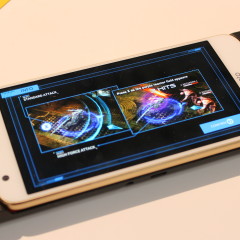
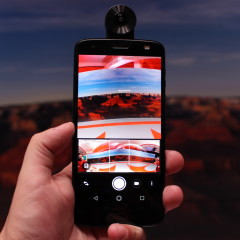

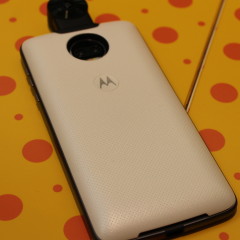


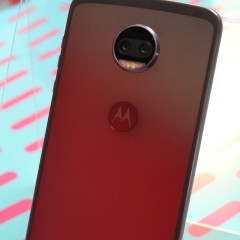

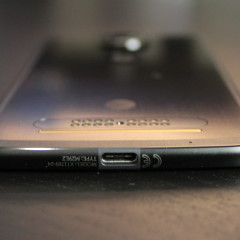


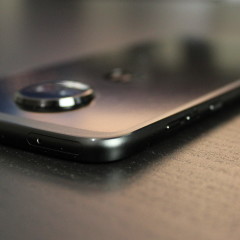
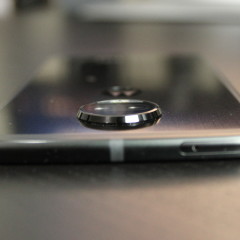
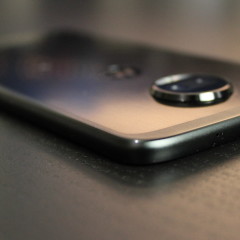


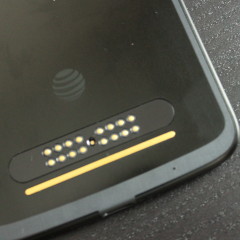
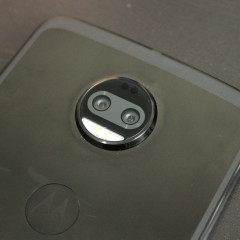
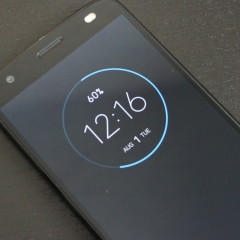

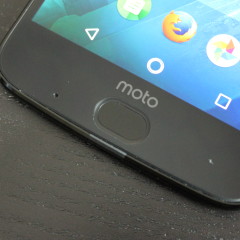


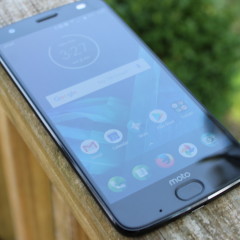

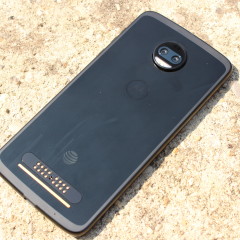









4 Comments - Add comment